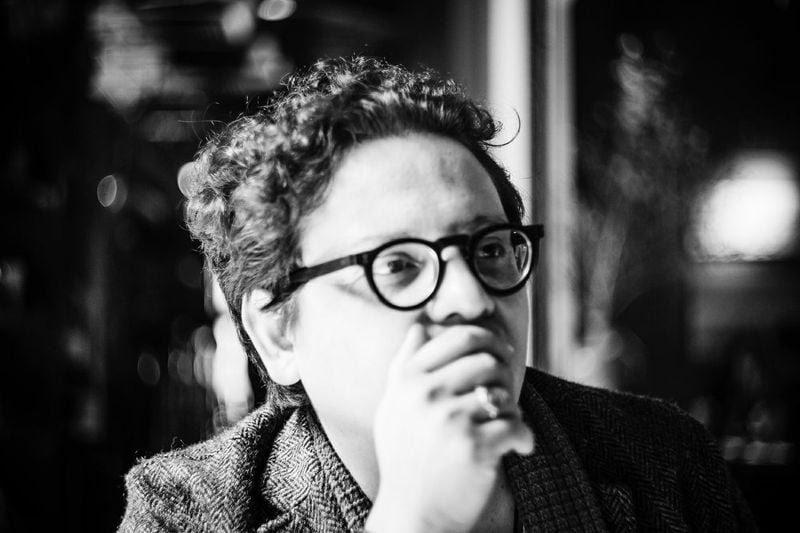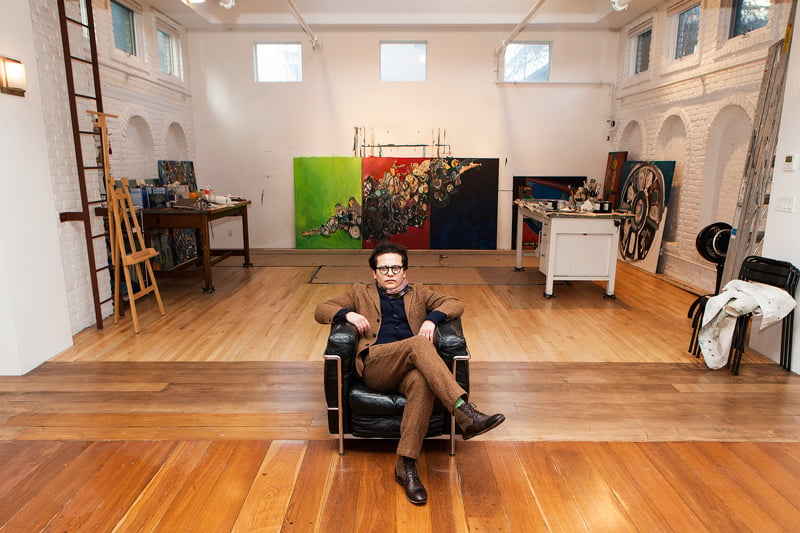Art & Exhibitions
Georges Bergès on Discovering Emerging Artists and the Importance of Looking Beyond Bushwick
He wants his artists to create the life they want through their art.

He wants his artists to create the life they want through their art.


Georges Bergès in the Midtown Manhattan Studio. Courtesy of Georges Bergès Gallery.
Georges Bergès’s Gallery in New York is set to be open a week from today. We had the chance to speak to him before about creating platforms for emerging artists and in investing in art in a secure way.
Tell us about your background in art and what led you here?
I have always been involved with art or artists at some level my entire life. I come from a family of artists—my brother and brother-in-law. But I have always taken an international perspective on art—I was always in dismay at the homogenous and sometimes narrow perspectives that the art world had on art and artists that were outside the Western world. I was much more interested in what was happening in Mexico City or Beijing than what was happening in Paris or London, and I think the world today is reflecting this new reality. Philanthropy has also been a major force in my life, and it is to this day. I have always wanted to merge the two: art and philanthropy.
How do you select artists that you represent? How does your personal taste play a role in your selection?
What I think makes me unique is that I love traveling the world looking for artists that I personally love and that I feel are not just unique within their own cultural context, but within the broader global art community. To me, art is a piece of recorded history of the human experience. This is why so much of it speaks to us at our most basic core—and my drive is to search the world to witness and document the many different culturally unique experiences expressed through art that are sometimes lost through historically ethnocentric views, and recently, through a continued homogenous way of looking at art.
Many gallerists, especially in New York City, consider a trip on the L train to Bushwick as their exploratory mission to the outer reaches of the art world. I go to the Bushwick of Mexico City, Beijing, or Madrid. I am not interested in the artist that leaves his or her country to move to Brooklyn and paint like Basquiat—I am more interested in the artist that does not want to leave his or her city or country and has a vibrant following within his or her own respective community; the artist that challenges the way art is viewed within his or her own community, and at times within the global community—and that special artist is the one I have devoted the rest of my life to working with, building, and sustaining. Ultimately, my goal is to ensure that these artists can sustain themselves and create the life they want through their art—establishing a secondary global market for their work will ensure that, and in the process will transform the entire art world.
What type of art does your gallery focus on?
Beauty, sensuality, and soulfulness—I have always had a global perspective on life, art, and integrity. And my drive has always been to find artists that are not only unique within their cultural context, but globally. More than a focus on a particular art or style, I look for art that personally moves me and contributes to our human experience.
Since you started, what have been the biggest changes in the gallery market?
Many of the galleries are focused on what is hot now or blue-chip art, and it seems to me that no one is looking out for the artist. Emerging artists have a hard time getting traction and breaking through, and their secondary market is almost nonexistent. What makes GB Gallery unique is that we focus on the artist. This should give the collector confidence that we are not selling art from artists that we ourselves don’t have a long-term stake in. What I am creating is something that I feel is desperately needed for emerging artists—a secondary market for their work.
Until recently, galleries only focused on prominent artists, or have taken few risks because of economic and other pressures, and the collector almost always takes a loss because the secondary market for emerging artists is still evolving. GB Galleries allows the collector to buy with confidence, and, if at any point after a year he or she wants to sell a painting, they can bring it back to a GB Gallery and we will put it in our global network and resell it. The collector is not stuck or alone with any painting he or she buys from us; and the longer he holds it, the less commission he gets charged for the resell. Why would you buy a painting anywhere else?
What advice can you give a first-time collector?
Many first-time collectors that I deal with have a few concerns—is the art piece valuable? Is the price of paintings, especially for emerging artists, worth the price? Will I get stuck with it? What will happen if I want to get rid of the painting? Can I sell it? Or is it just a loss?
What I tell collectors is to first pick art that they love—that they find an intrinsic value in—and then see if the gallery selling it has a long-standing relationship with the artist. GB Gallery stands by its emerging artists and has established long-term relationships with them. In addition, if at any point you want to get rid of the painting, you can always return it and we will include it in our global network of galleries and collectors. For the first time, emerging artists have an opportunity to let the global market of buyers determine who the next star will be. We will be able to expose our artists to major cities around the world instantly, working to build and establish a global demand for their art dictated by regional and global tastes.
If you were not an art dealer, what would you be doing?
I probably would be working for some international nonprofit—I really love people from a global perspective—I love missions and purpose.
When is your next show?
On June 11, we are opening Georges Bergès Gallery at 462 West Broadway in the heart of New York City’s SoHo district with a group show and an exhibition titled “The Metaphysics of Seeing,” with Chinese artist Liu Shuishi and Michael Hafftka.